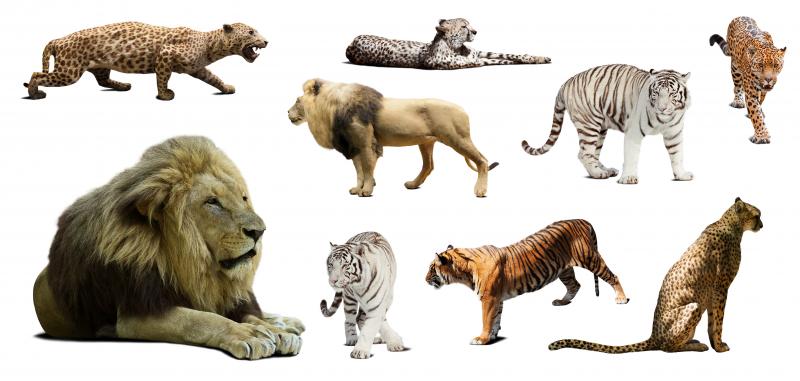Why Do We Get New Species?
Genesis 1:24-25
And God said, Let the earth bring forth the living creature after his kind, cattle, and creeping thing, and beast of the earth after his kind: and it was so. And God made the beast of the earth after his kind, and cattle after their kind, and every thing that creepeth upon the earth after his kind: and God saw that it was good.
We know that Noah did not have to fit two of every species of animal on the Ark. The Ark sheltered two of every kind of land and flying vertebrate, not two of every species. For example, modern species like lions and tigers would have developed from the pair from the  cat family that were on the Ark. Over time, different species of cats have developed from this pair.
cat family that were on the Ark. Over time, different species of cats have developed from this pair.
It is easy to see how this happened. Environmental conditions favor certain genes over others, so that these features are selected in the offspring. A simplistic example is that creatures with longer hair or fur have developed in colder areas of the world. This has involved no new genetic information; there has simply been selection from existing genetic information.
But why did God make this speciation possible? God knew the different conditions that would arise in different parts of the world. Because Scripture shows us that God actively sustains life, it is possible that He included this ability to diversify in creatures in order to help their offspring to survive in radically different conditions – especially the vastly changed conditions in the aftermath of the Flood.
Prayer: Thank You, Lord, because we read that You give the beasts their food. You own the cattle on a thousand hills, and You look after Your creation with wisdom. Amen.
Author: Paul F. Taylor
Ref: Lightner, J.K. (2016), Toward a Creationary View of Why Speciation Occurs, Journal of Creation 30(1):70–75, April 2016. Image: Adobe Stock Photo, licensed to author.